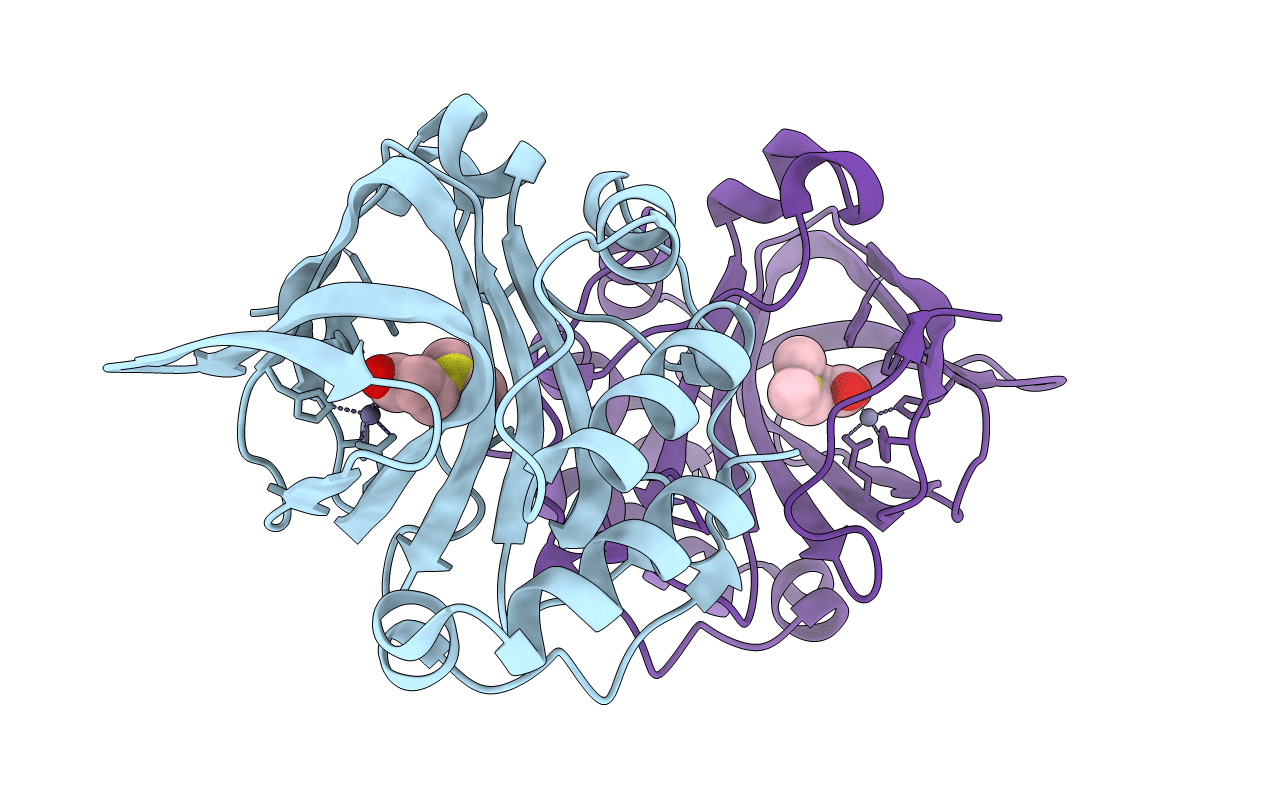
Deposition Date
2013-06-19
Release Date
2014-01-15
Last Version Date
2023-11-08
Entry Detail
PDB ID:
4LA3
Keywords:
Title:
Crystal structure of dimethylsulphoniopropionate (DMSP) lyase DddQ Y131A in complex with DMSP
Biological Source:
Source Organism:
Silicibacter lacuscaerulensis (Taxon ID: 644107)
Host Organism:
Method Details:
Experimental Method:
Resolution:
2.70 Å
R-Value Free:
0.27
R-Value Work:
0.19
R-Value Observed:
0.20
Space Group:
P 21 21 21


